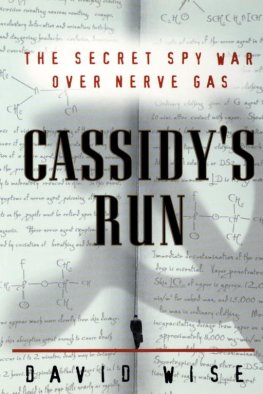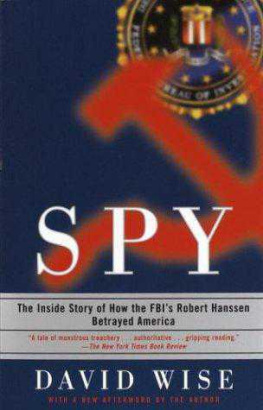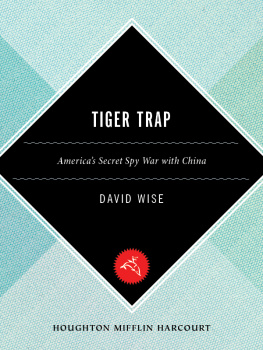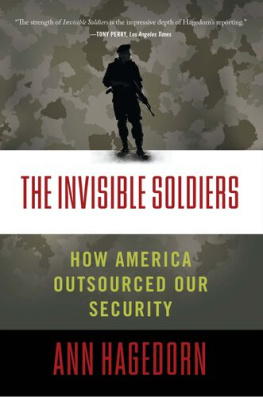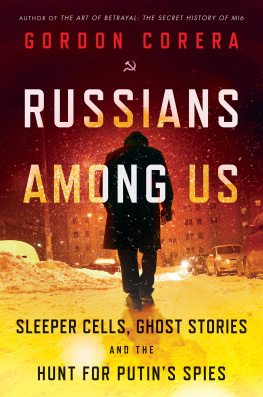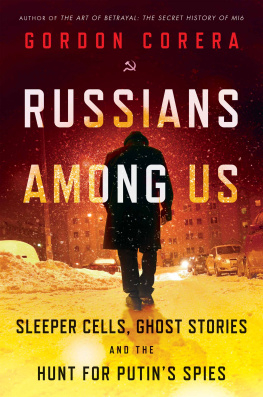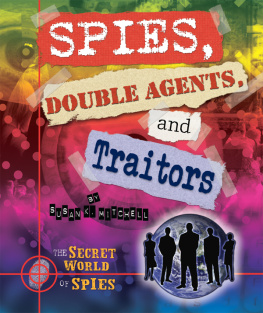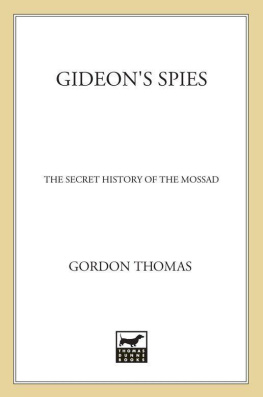David Wise
CASSIDYS RUN
The Secret Spy War over Nerve Gas
CHAPTER: 1
LIKE A POLE THROUGH MY GUT
The Cessna 172 seaplane had run into a sudden, dangerous summer storm. Flying low above the lake country in northern Minnesota, the light craft, with the pilot and one passenger aboard, was being buffeted by strong winds and torrential rain.
The pilot called the tower in Hibbing. He said he had to make an emergency landing. In the brief, terse conversation, he indicated he would try to set the plane down in Sturgeon Lake, northwest of Chisholm. But at the last moment, tossed about in the howling wind and rain, the pilot apparently changed his mind and attempted to land in Dewey Lake, which was much smaller but nearer to his position. The Cessna approached the north end of the lake, close to the shoreline. It was 5 P.M., Thursday, August 25, 1977.
Certain officials of the United States government were keenly aware of the flight and its secret purpose. The two men aboard were not vacationers looking for a fishing camp, nor were they businessmen returning home. The pilot, Trenwith S. Basford, and his younger passenger, Mark A. Kirkland, were both special agents of the FBI.
Only two weeks earlier, Mark Kirkland had turned thirty-three. His wife, Julie, decided to throw a surprise birthday party.
There was Mexican food, I hired a flamenco dancer. A lot of friends came, Boy Scouts, people from the neighborhood, and a few from the office. The couples two little boys had a great time at the party. Kenneth was two months shy of being three, Christopher was one year old.
The Kirklands had a good life together. They lived in Minnetonka, near Minneapolis, in an old, three-story farmhouse they were renovating. A devout Mormon, Mark was the leader of the local Boy Scout troop. Five years before, he had realized his lifelong ambition of becoming an FBI agent.
Normally clean-cut and clean shaven, Kirkland was a striking figure at his birthday party in long, shaggy hair and a full beard. Julie knew why; her husband was undercover on a case. He had not told her a lot of details, but she knew he was trying to pass as a college student. People at church, the Mormon church, questioned him about it, Julie said. It wasnt common to have shaggy hair.
Julie was concerned about the case. It seemed to involve a lot more than college students. At twenty-five, with two small children, she worried that her husbands work might put him at risk. This was not an idle fear. Two years earlier, Marks best friend and fellow FBI agent, Ron Williams, had been killed on the Pine Ridge Indian Reservation near the tiny village of Wounded Knee, South Dakota. Mark and Ron had served in Army intelligence together, joined the bureau around the same time, and went through training together at the FBI academy in Quantico, Virginia. Both were assigned to Los Angeles and then to Minneapolis. Mark was best man at Rons wedding, Julie recalled. And he was out at the Oglala Sioux reservation when Ron was killed.
Then there was all the flying Mark was doing. Lately, he had been up on several aerial surveillances with Tren Basford. Julie deduced it was connected to the same case.
When he left on another surveillance two weeks after the surprise flamenco party, she admonished him gently. I knew he was going up in the plane. I said, Dont be a kamikaze, dont push the plane to the limit. He had a pat answer. He kissed me on the forehead and said, You worry too much.
That was on Tuesday. Now it was two days later. Julie Kirkland remembered every detail of that day. In the late afternoon I had gone with friends, John and Geri Christianson, to the Farmers Market to buy peaches and tomatoes. We were going to make some baskets for shut-ins at church. At the market it was a beautiful late summer afternoon, with a few rain showers, then sunshine and very pleasant, but I got this sensation of freezing cold and a sense of panic. Through my head the words were echoing, Go home. The Christiansons could see the panic in my face. I said, I have to go home. I got home, and the baby-sitter was there. And Kenny had been crying. I put Kenny on my knee and said, Whats the matter? And he said, Daddys crying, Mom.
Tren Basfords wife, Letitia, was also uneasy. As a pilots wife, she paid close attention to the weather, and she knew her husband was flying that day. Despite the sunshine, the wind had come up. Gray, fast-moving clouds occasionally darkened the sky. I was concerned that day because it was a very strange day with strong and conflicting winds. I was at the State Fair outside Saint Paul, and I didnt like the weather. The wind seemed to keep changing directions, whipping across the open fairgrounds.
Still, she knew her husband was a good and careful pilot. He had held his pilots license for ten years and owned his own plane for seven. He was experienced with floatplanes. I would stay up at our lake place in Canada all summer and he would fly up weekends. In fact, he planned to fly there when the surveillance was over; Letitia was to drive up, take their boat in, and meet him at the cabin, on Jackfish Lake.
Tren Basford was a straight arrow. A tall, quiet man, he was looking forward to his retirement in four months after serving thirty-five years in the FBI, mostly during the era of J. Edgar Hoover. Born in Red Lodge, Montana, he had been raised in Minnesota; his father was a dentist, his mother an English teacher.
When he was only thirteen, while on his paper route, he saved a mans life. The Minneapolis Evening Tribune ran his picture, and the headline told it all: BOY SCOUT SAVES VICTIM OF GAS POISONING, SLIPS AWAY AFTER GOOD TURN. The man, A. H. Warner, had been working on his car in his garage when he had been overcome by carbon monoxide. Young Tren heard Warners wife cry for help, and he performed artificial respiration on the unconscious man for ten minutes before an ambulance arrived; then, quietly, he left.
He met his future wife at the University of Minnesota, where her father, August Charles Krey, was head of the history department. They dated for five years, then married in 1941, after Tren had graduated from the universitys law school. He joined the FBI in 1942, working in Newark, Baltimore, and New York during World War II. He handled everything from espionage and sabotage to criminal work. In one of his first cases, Basford joined the search for the eight Nazi saboteurs who landed at Amagansett, on Long Island, and at Saint Augustine, Florida, by submarine during the war; all were captured, and six were executed. Basford was transferred to Minnesota in 1957, where he investigated bank robberies and other criminal cases.
Coming home was a happy assignment for Basford, who loved hunting, fishing, and flying. Every year when the walleye season opened on May 15probably the biggest holiday of the year for Minnesota fishing enthusiastsBasford was in the lake country. During hunting season, he brought back venison, wild duck, and pheasant.
Letitia, whom everyone called Tish, knew little about her husbands work. She did not know why he was flying that day. I simply assumed he was working on an important case. It was none of my business. I go back to Hoovers day, when if you were asked what your husbands business is, you said, He works for the government. During the war, I couldnt get a library card because I wouldnt tell them where he worked. Tren never told me very much about what he was doing.
In the days before Basford got his plane, he and Tish traveled by car and canoe around the Gasp and Cape Breton Island, all though Maine and the Maritimes, up to Yellowknife and across Canada to Alaska. We portaged into wild lakes and watched the northern lights. We always took the small roads and the unfrequented ones.

